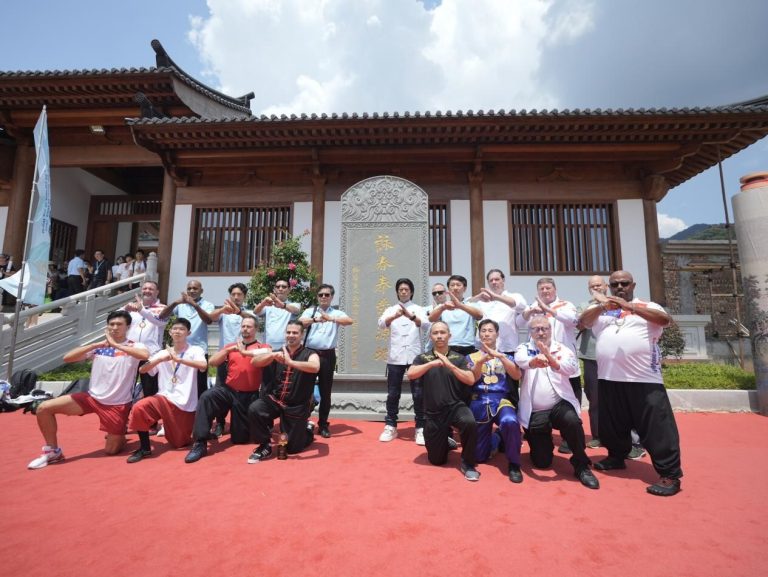The inaugural World Southern Shaolin Wing Chun Competition, held at the historic Southern Shaolin Temple in Fuqing, China, has successfully concluded. This landmark event, which began on April 3, was not just a martial arts tournament but a vibrant celebration of Chinese heritage and Shaolin culture, drawing practitioners and enthusiasts from around the world.
A Grand Display of Martial Arts Excellence
- Siu Nim Tao (Little Idea)
- Cham Kiu (Seeking the Bridge)
- Biu Tze (Thrusting Fingers)
- Bart Cham Dao (Eight Cutting Knives)
- Luk Dim Boon Kwun (Six and a Half Point Pole)
- Mook Yan Jong (Wooden Dummies)
- Chi Sau (Sticking Hands)
Over three days of rigorous contests, 36 standout participants emerged victorious, each demonstrating exceptional mastery in their respective disciplines. Their performances highlighted the depth of skill and dedication within the Wing Chun community.
Embracing Global Participation and Camaraderie
The competition’s structure was designed to reflect the global resonance of Wing Chun. With preliminary rounds conducted online, participants from Asia, Europe, and the Americas competed on a unified platform, culminating in live finals. This inclusive approach emphasized Wing Chun’s universal appeal and its ability to foster international camaraderie and mutual respect through martial arts.
The Historic Significance of Southern Shaolin Temple
The Southern Shaolin Temple in Fuqing, with its origins tracing back to the Zhenguan era of the Tang Dynasty, has been a pivotal site for martial arts and Zen practice. Flourishing through the Song Dynasty and reaching its zenith in the Ming Dynasty, the temple has played a crucial role in the development and preservation of Wing Chun. Despite historical upheavals and numerous challenges, the temple has maintained and enriched its esteemed cultural legacy, influencing countless generations both in China and around the world.
Wing Chun: A Global Martial Arts Phenomenon
Wing Chun, a distinctive Kung Fu style that originated at the Southern Shaolin Temple, is attributed to Wu Mei, a figure significantly influenced by a Zen Master during the late Ming and early Qing Dynasties. Recognized in 2014 as part of China’s national intangible cultural heritage by the city of Fuzhou, Wing Chun represents not only the rich heritage of Chinese martial arts but also its global impact. With over ten million practitioners worldwide, Wing Chun continues to symbolize a legacy of endurance, cultural exchange, and martial prowess.
Celebration of Cultural Heritage and Modern Impact
This inaugural competition not only celebrated the ancient art of Wing Chun but also reinforced the Southern Shaolin Temple’s role in bridging cultural gaps and preserving martial arts traditions. By bringing together participants from around the world, the event underscored the importance of Wing Chun in fostering global understanding and respect through the shared experience of martial arts.
The World Southern Shaolin Wing Chun Competition stands as a testament to the enduring legacy of the Southern Shaolin Temple and the universal appeal of Wing Chun, highlighting its continued relevance and impact on the global stage.
